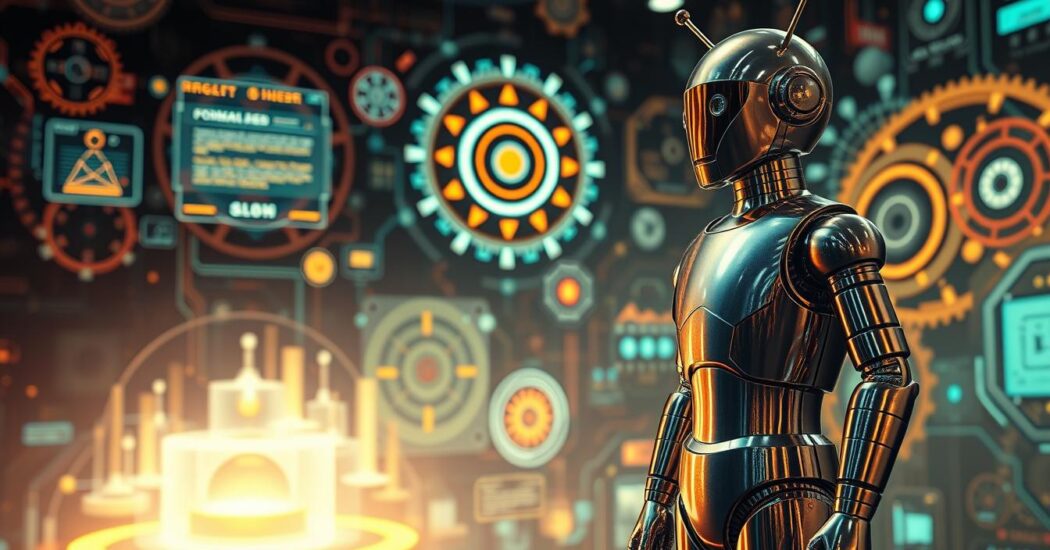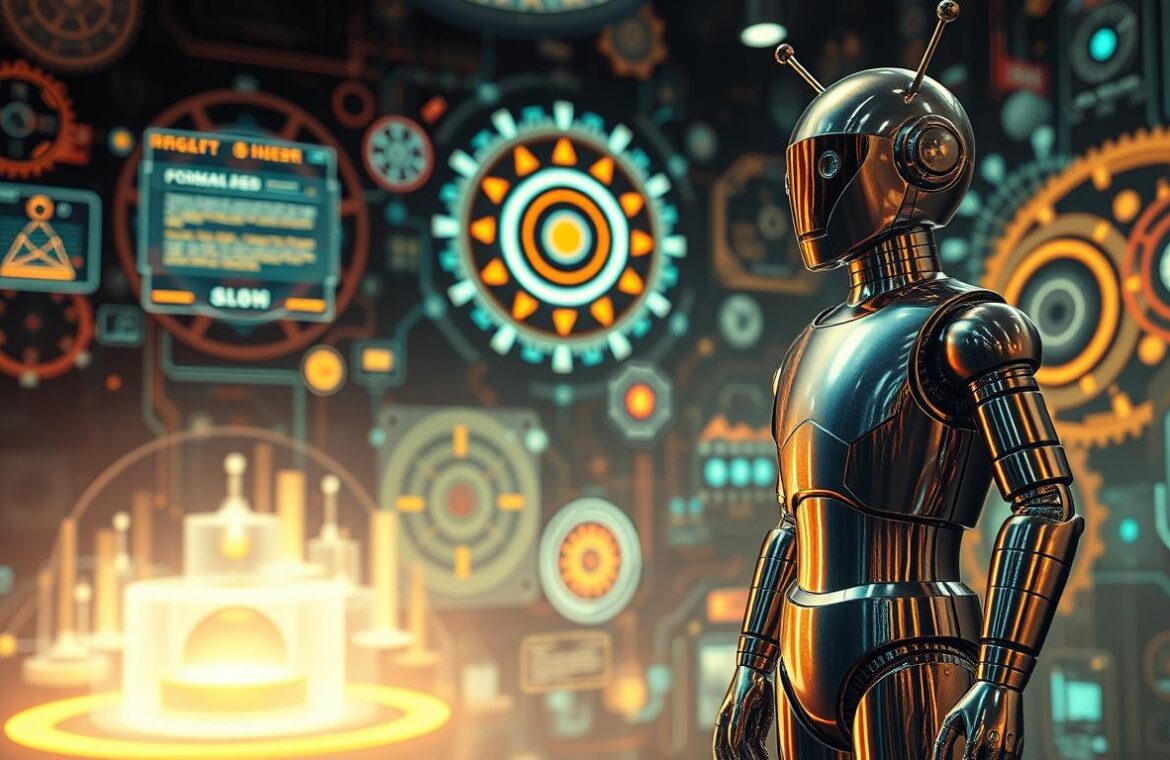Looking into the history of digital assistants, we find a story that starts with the birth of artificial intelligence. The journey of digital assistants shows key moments that have changed how we use technology. These early steps in AI paved the way for the smart tools we use every day.
By looking back, we see assistants as major achievements in tech. They also push us forward in making technology more interactive and intelligent.

Key Takeaways
- The history of digital assistants showcases remarkable advancements in artificial intelligence.
- Early innovations set the stage for the smart technologies we rely on today.
- Digital assistants represent a prime example of the convergence between technology and user interaction.
- The evolution of these assistants illustrates significant milestones in AI development.
- Understanding this history enhances our appreciation for modern technological capabilities.
The Emergence of Digital Assistants
Looking back, we see how digital assistants came to be. It all started with early AI technologies. These early steps were crucial for machines to talk to us like they do now.
Understanding Early AI Technologies
At first, AI researchers aimed to make machines understand human language. The first digital assistants were simple but showed us what was possible. Their early success set the stage for today’s smart helpers.
The Role of Speech Recognition
Speech recognition changed how we talk to devices. It made it easy to use natural language with machines. This led to the creation of popular digital assistants like Alexa and Google Assistant. It shows how important speech recognition is for better user experience.

Milestones in Digital Assistant Development
Many important innovations have shaped digital assistants over the years. These breakthroughs, in both hardware and software, have greatly influenced AI since the 20th century.
Key Innovations in the 20th Century
The 20th century was crucial for AI. Personal computers allowed users to interact with technology in new ways. This set the stage for more advanced systems. Some key examples include:
- IBM’s Deep Blue, which beat the world chess champion in 1997, showing off its advanced skills.
- Natural language processing emerged, making it easier for users to talk to machines.
- Early voice recognition systems started to pave the way for voice-controlled digital assistants.
Transformation Through the 21st Century
In the 21st century, digital assistants became a big part of our lives. Important developments included:
- Apple’s Siri was introduced in 2011, making hands-free digital help common.
- Google Assistant and Amazon’s Alexa greatly increased what digital assistants could do.
- Improvements in mobile devices and the internet allowed for more complex AI and easier integration into our lives.
These 21st century digital assistants are the result of years of research and development. They have changed how we use technology today.
The Digital Assistant was One of the Earliest Innovations in AI
The digital assistant is a key innovation in artificial intelligence. It uses natural language processing to talk like humans. This has made technology more accessible to everyone.
Integration of Natural Language Processing
Natural language processing is crucial for computer-human interaction. It lets machines understand and create language. This has made virtual assistants like Siri and Alexa possible.
These assistants can understand what you say and learn from you. They offer a personalized experience that changes based on your preferences.
Impact of User Interaction on Development
User feedback has greatly improved assistants. As users give feedback, developers make the systems better. This cycle of improvement has made digital assistants more intuitive and human-like.
Developers keep making these assistants more responsive and personal. This leads to better experiences for users.
Modern Digital Assistants and Their Capabilities
Digital assistants have changed a lot in recent years. Now, they have advanced features that make our lives better. They learn what we like and need, making our daily tasks easier.
Personalization and User Experience
AI personalization has changed how we use digital assistants. They learn from us and give us what we like. This makes them feel more like friends, not just machines.
As they get to know us better, they become even more helpful. They create a space that fits our lives perfectly.
Machine Learning Impacts
Machine learning is key to digital assistants’ growth. They use smart algorithms to understand us better. This lets them guess what we need before we ask.
As they learn more, they get better at helping us. This shows their dedication to making our lives easier. But, they also face challenges like keeping our data safe.
Conclusion
Looking back, we see how far assistance in digital have come. They started with simple AI and now we have smart tools like Amazon’s Alexa and Apple’s Siri. This journey shows how much AI has grown and how it has changed how we use technology.
The future of assistance in digital looks exciting. With better machine learning and natural language processing, they will become even more useful. But, we also need to think about privacy and making sure everyone can use them.
In summary, digital assistants are a big step forward in AI. They’ve moved from simple voice commands to smart systems that help us every day. As we move forward, we can expect even more improvements that will change how we interact with technology.
| Traditional Systems | Modern Digital Assistants |
| Manual updates | Real-time learning from user interaction |





